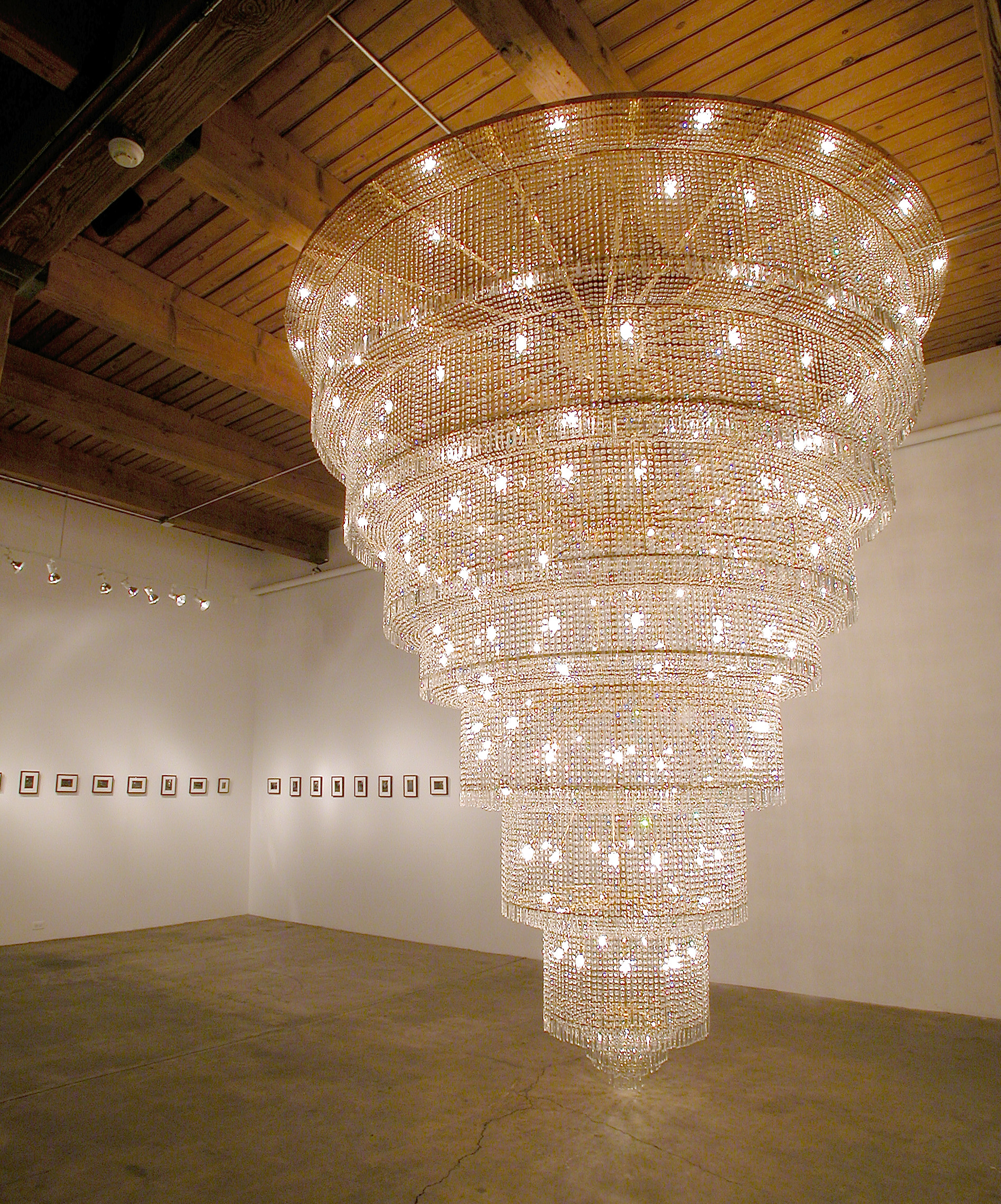-

Ai Weiwei
Chandelier, 2002
Crystal, light bulbs and metal
174 X 168 inches
Installation view, Carrie Secrist Gallery, Chicago
The Last Seduction: A Welcome Surrender to Beauty
April 27—August 31, 2007
Carrie Secrist Gallery is pleased to present The Last Seduction – A Welcome Surrender to Beauty. This large-scale survey exhibition of contemporary work in all media brings together an impressive group of established and emerging artists: Michael Antkowiak, Joy Episalla, Ori Gehrst, Kirsten Hassenfeld, Bill Henson, Anish Kapoor, Kim Keever, Zilvinias Kempinas, Yves Klein, Justine Kurland, Robert Lostutter, Robert Mapplethorpe, Vik Muniz, Gerhard Richter, Ed Ruscha, Mark Ryden, Eva Schlegel, Randall Sellers, Petroc Dragon Sesti, Kiki Smith, Robert Standish, Hiroshi Sugimoto, Eve Sussman, Ai Weiwei, and Hiro Yokose.
Art that elicits an undeniable visceral response from the viewer is the common denominator of the exhibition. The selected work lures those who dare back into the room with an unabashed sense of beauty. Though there have been numerous exhibitions and essays of note which examine the role of “Beauty” in contemporary art, The Last Seduction celebrates the not-so-secret yearning of audience and artist alike to once again connect via a reinvented, generous aesthetic.
Turning a deaf ear to the art world’s suspicion of all things “transcendent” or “beautiful”, curator of the exhibition and gallery owner Carrie Secrist further concedes that the central theme of this exhibition focuses on pieces that go against the grain of what has become the standard over the last few decades—“autonomous” art that is seemingly unaware or simply disinterested in its audience. What initially might appear to the viewer as “taboo” or visual “guilty pleasure” here manages to assure a potent conceptual validity that cannot be discounted even in today’s austere cultural climate. Beauty itself is the concept that permits both a mental and physical transcendence.
The real power of the exhibition is found in the curated “pairings” or “trios” of works that address different sub-categories under the general theme—visceral vignettes that create a dialogue with one another – and finally invite the viewer to participate. The harmonious trio of a seminal seascape by Gerhard Ritchter complemented by a Hiroshi Sugimoto ocean study photograph which then flows into the “Turner-esque” beeswax triptych by Hiro Yokose hypnotically captures unattainable nature. Yves Klein’s Blue Venus in relation to Robert Mapplethorpe’s Ken & Lydia draws the viewer into the perfect pleasure of flesh. Equally intriguing is the photographic trifecta of C-prints by Eve Sussman and Bill Henson in relation to Justine Kurland’s Pale Serpent, which elicits the intrinsic spectrum of sex or the sublime invention of unbelievable installations by Petroc Dragon Sesti and Zilvinas Kempinas. Additionally, a porcelain sculpture by Mark Rydon entitled Angel of Meat beckons a large-scale peacock drawing by Kiki Smith. Both respond to the paper fantastical environment of Kirsten Hassenfeld (a place where the two works could likely call “home”).
Yet the real “show stopper” may be the transcendent beauty that actually mocks beauty: the true definition of “awesome” embodied in a chandelier installation by Ai Weiwei as offset by a work by Ed Ruscha, an artist known for his exquisite forays into visual satire.
These purposeful yet thoughtful relationships drive home Secrist’s case in this ongoing debate regarding the importance of beauty in contemporary art and, moreover emphasize her passionate curatorial eye and dedication to this discussion. The overall end result of this notable undertaking welcomes the viewer back into the room to engage with the visual that will translate our time to future generations– even if it is “beauty” making sense of what may seem as an overwhelmingly “ugly” or “uncertain” moment in history.